These 16 curtain ideas take the guesswork out of this tricky window treatment to help you totally transform your space
Curtains can make or break a room. These standout ideas can help you pull your whole home together

- 1. Go bespoke for the most luxurious results
- 2. Make sure you get the fabric weight right
- 3. Let the light in with sheer fabrics
- 4. Block out light with heavier materials
- 5. Go for a layered look with blinds
- 6. Go retro with a traditional pelmet
- 7. Embrace the matchy-matchy look by pattern drenching
- 8. Choose prints that echo a garden view
- 9. Use drapes to create zones
- 10. Use pattern and color to uplift a neutral space
- 11. Embrace a more maximalist look
- 12. Try out a chic cafe curtain
- 14. Add contrasting and playful trim
- 15. A front door curtain will trap in warmth
- 16. Use your curtains to create the sense of height

Zara Stacey
As someone who’s spent a lot of time rethinking the details in my home, I’ve come to realize just how transformative good curtain ideas can be. The right fabric doesn’t just dress a window – it can elevate an entire space.
Window treatment ideas are essential for most homes; practical as well as super versatile, your curtains can really make or break a scheme, so thinking carefully about the design, shape, and style of the curtains in your space is important.
There are so many curtain ideas out there, from sheers that let the light pour into heavyweight fabrics that bring drama and depth. So, below, I’ve pulled together some of the most stylish and versatile ideas I’ve come across, with plenty of expert advice to help guide your own decorating decisions.
16 design-led curtain ideas to inspire
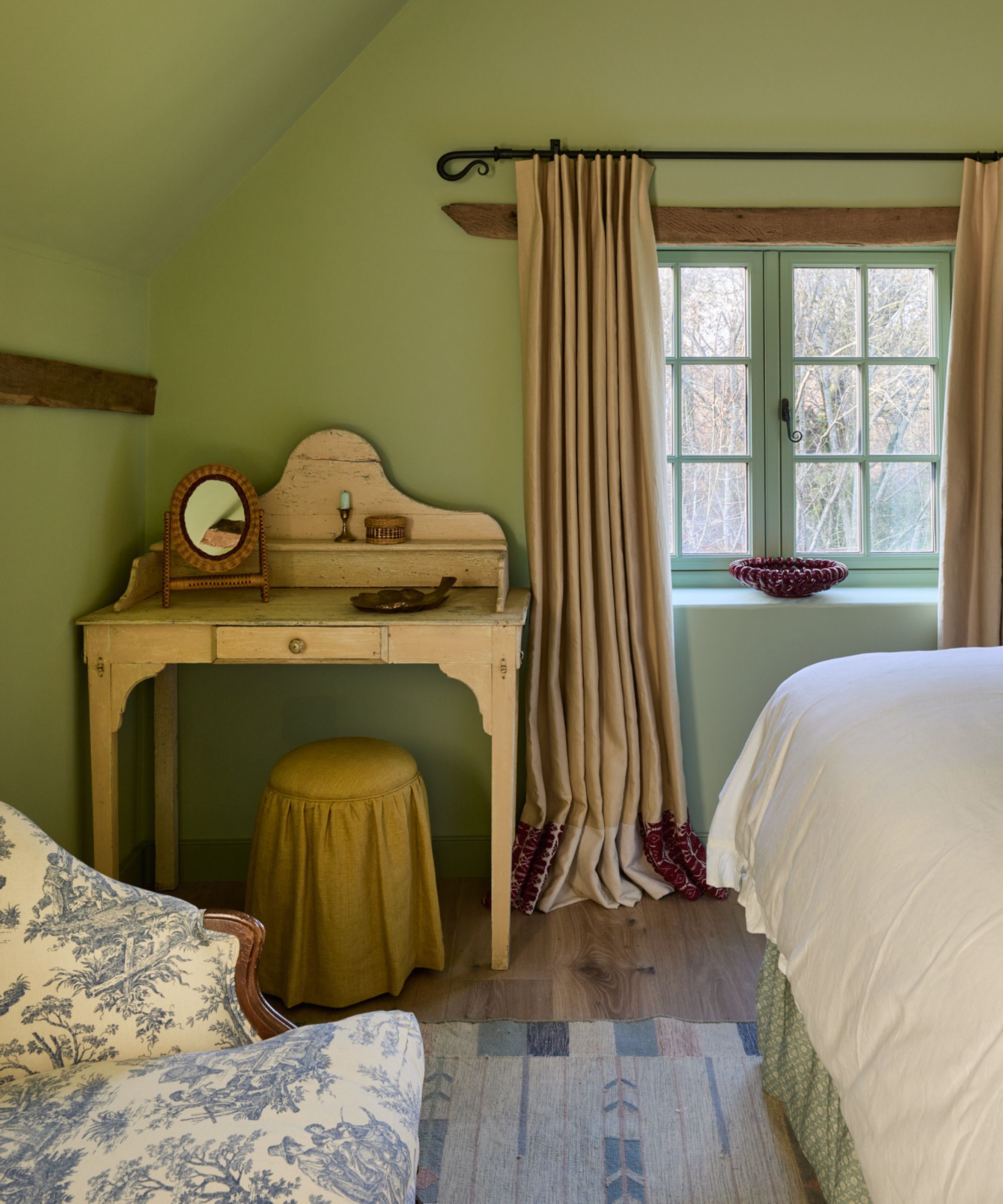
From pencil pleats to eyelets, tab tops, and box pleats, there are many different materials and types of curtains to choose from.
When it comes to choosing curtains for your home, the first thing to think about is why you need them. From delicate sheers and voiles to luxurious velvets and elegant linens, the possibilities are endless. To help narrow down the options, think about the function of the curtains. Are they to add privacy for an overlooked space, light blocking for a bedroom, or simply to add some color and pattern to your room?
Generally, curtains should be higher and wider than the window, so for working out how to measure for curtains, some key things to consider include the curtain length and width, and the position of the curtain rod or rail.
To inspire your new scheme, and to help with the curtain ideas in your home, we have gathered a collection of curtain designs that show a range of styles across the home.
Design expertise in your inbox – from inspiring decorating ideas and beautiful celebrity homes to practical gardening advice and shopping round-ups.
1. Go bespoke for the most luxurious results
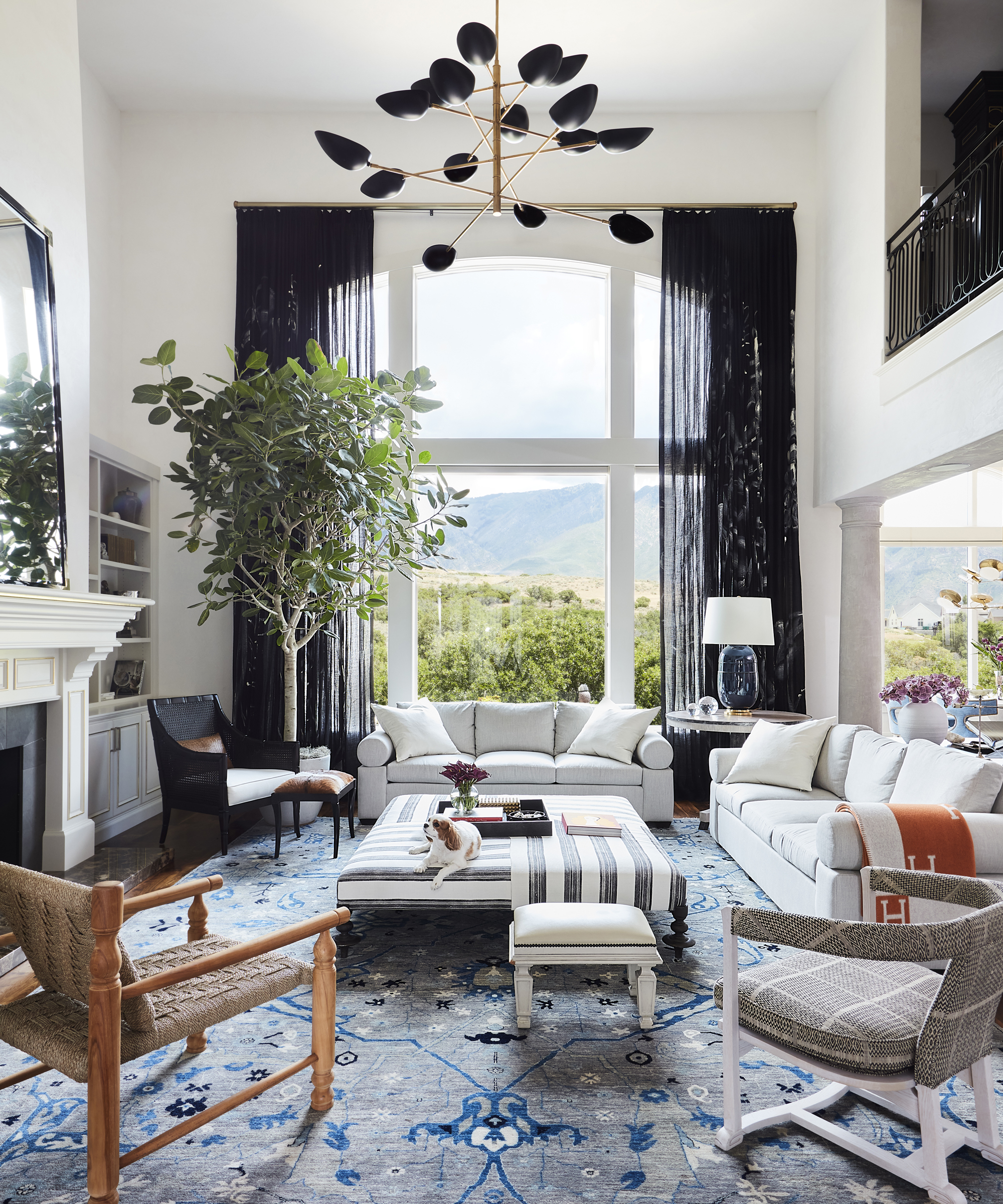
While ready-made options are often more accessible, nothing compares to the tailored finish and elevated impact of custom window treatments. ‘For more bespoke options, try a made-to-measure service,’ say Jenna Choate and Mariana Ugarte, co-founders of Interior Fox. ‘This will give the freedom to select your own fabric and have the curtains made to size, which is especially helpful when working with unusually shaped windows.’
In this room by Alice Lane Interior Design, the double-height curtain ideas were put together with fabric imported to Utah from the UK, which was then hand-painted by artist Tyler Huntzinger. Getting bespoke curtains can, however, be a simpler process.
‘Shopping custom-made is much easier than most think, with online retailers offering a simple and straightforward service that allows you to put in your measurements and fabric of choice, which is then delivered straight to your door in a matter of weeks,’ say Choate and Ugarte.
2. Make sure you get the fabric weight right
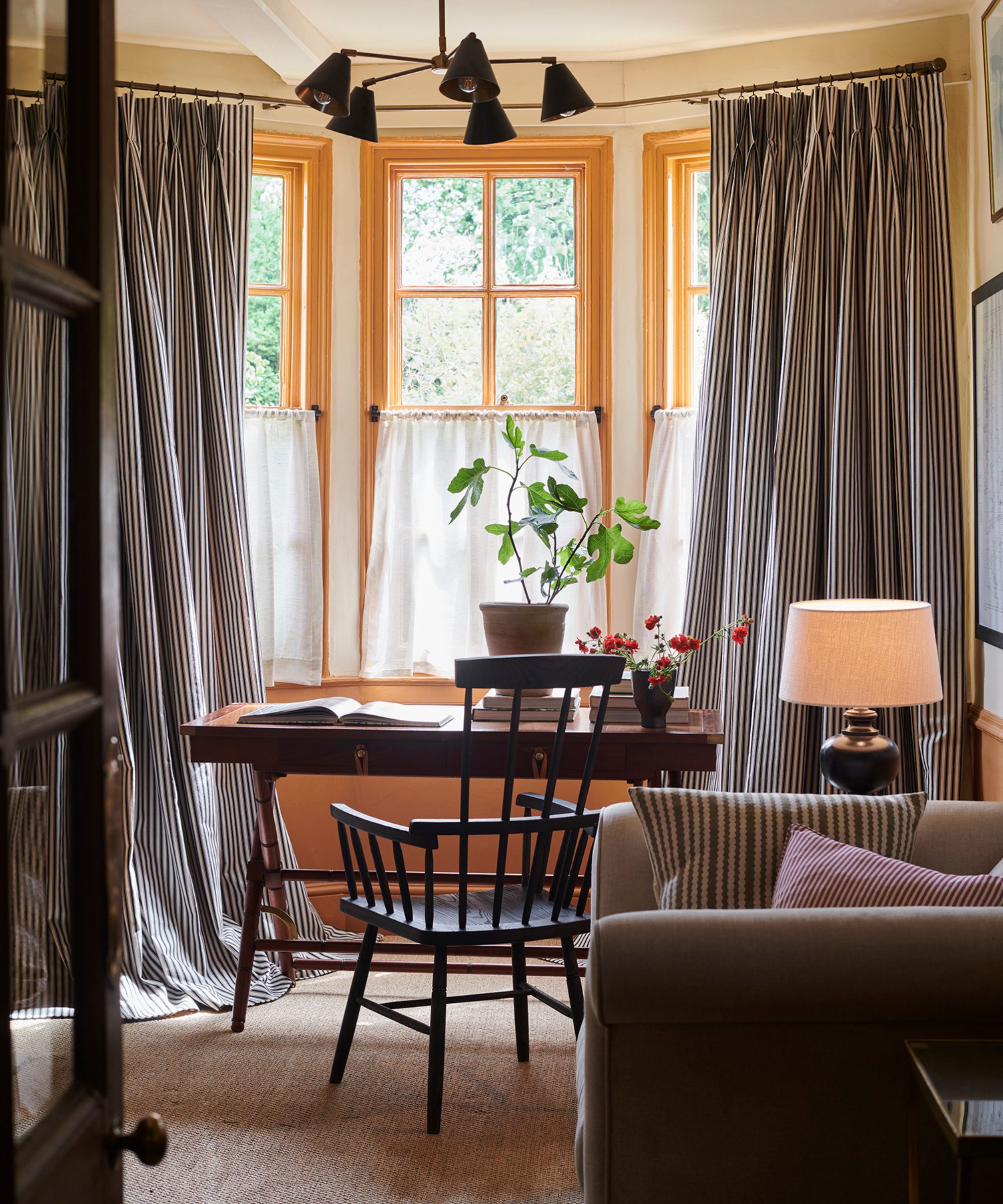
Fabric weight plays a crucial role in both the function and the aesthetic of curtains. Too heavy, and curtains can overwhelm a small room or block too much light; too light, and they might lack presence or fail to provide enough privacy or insulation.
‘When choosing the right fabric for a space, you need to ask what you want from the fabric,’ advises Hayley McAfee, design director at Villa Nova.
‘If you are looking for warmth, heavier fabrics such as wool or velvet will reduce drafts. You could also use medium-weight fabrics, if lined or interlined. On the other hand, lightweight fabrics will allow daylight to filter through in a living room like the one shown. If drafts are not a concern, then try a sheer or unlined curtain, which you can then layer with a blackout blind to stop the light coming through.’
3. Let the light in with sheer fabrics

Sheer curtains are the go-to choice for summer window treatment ideas and for anyone looking to maximize natural light while still adding softness and elegance to a space.
‘I always think of window dressing as the final finishing touch to your room. The color is important, but for me, the fabric and drape are at the top of my curtain list to get right,’ says Molly Freshwater, creative director at Secret Linen Store.
‘My first rule of curtains is that they should be long to the floor and in the case of 100% linen curtains, even longer. If it’s an airy, bright feel that you want in the room, it has to be 100% linen. These curtains let the light dapple through, and give you privacy at the same time. They can be drawn back to almost nothing during the day, and if you want to tie them, they are so light, you need only use a lovely ribbon.'
4. Block out light with heavier materials
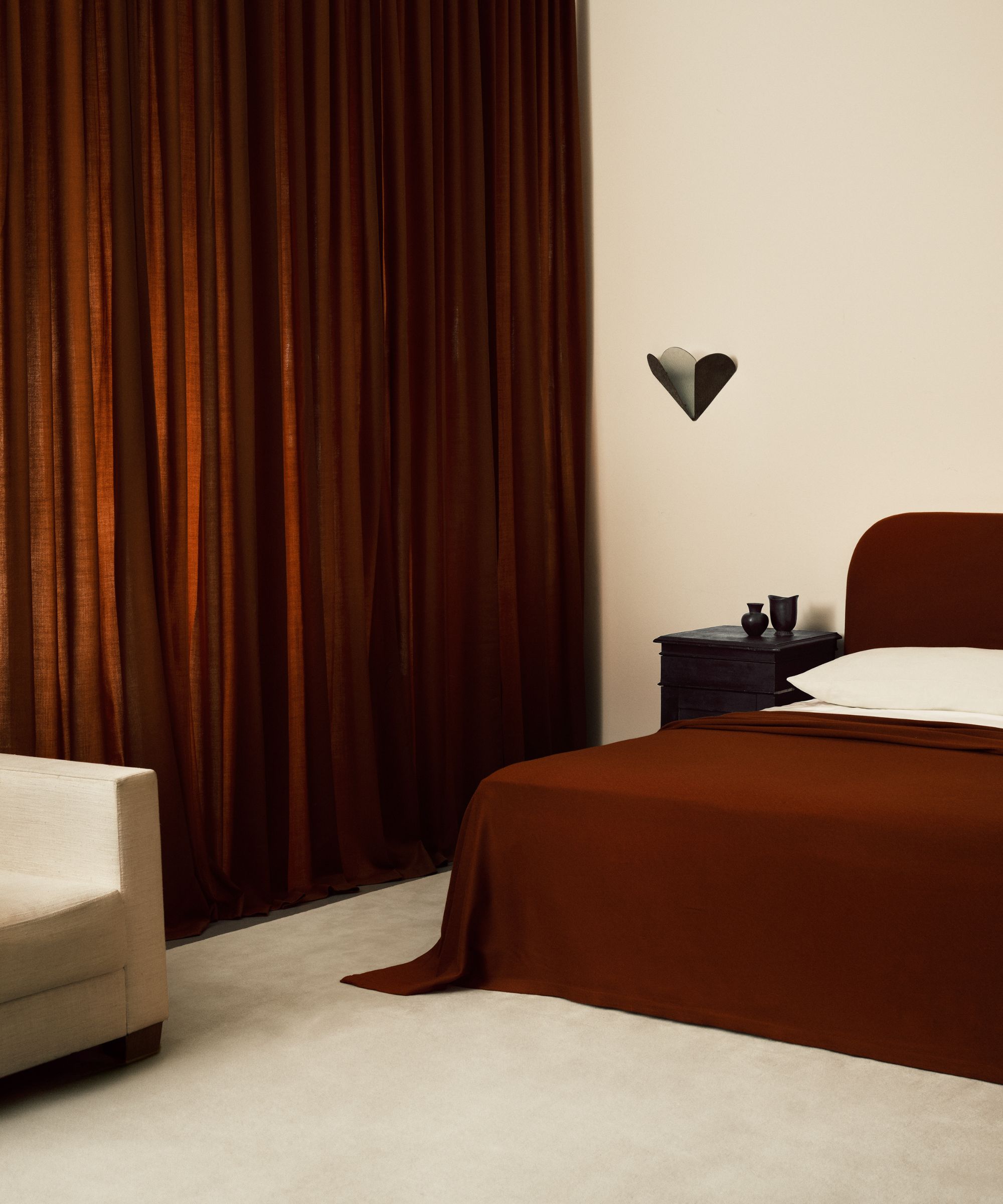
While sheer fabrics let the light in, there are times when blocking it out completely is the priority – and that’s where heavier curtain materials come into play.
Perfect for bedroom curtain ideas, media and movie rooms, or any space where privacy and light control are essential, dense fabrics like velvet, wool, or interlined cotton can provide a rich, insulating barrier while adding a luxurious feel to the room. When it comes to styling, darker or more saturated colors tend to heighten the dramatic effect, while mid-tones and textured neutrals can still feel weighty without overpowering the space.
5. Go for a layered look with blinds
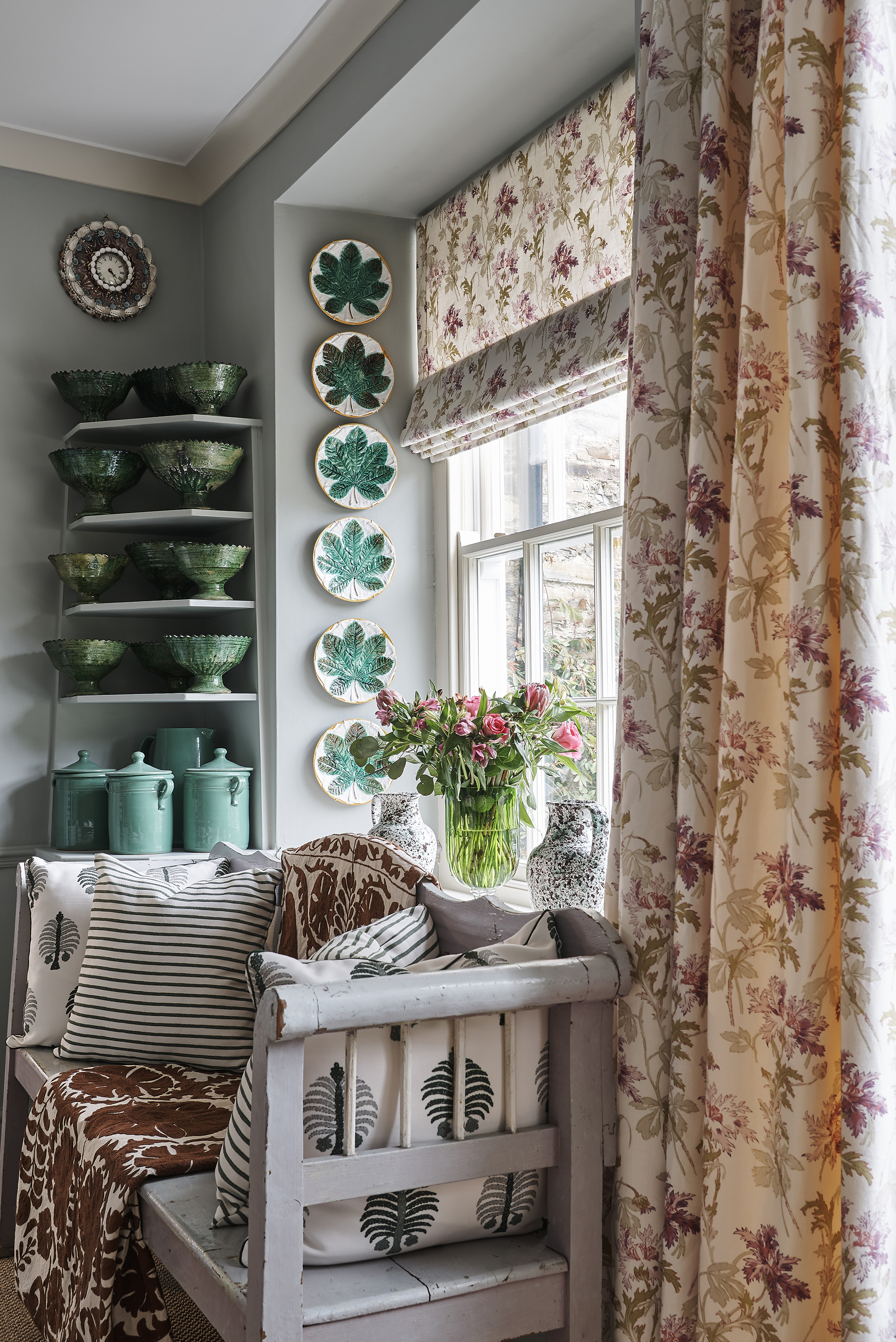
Alternatively, layering curtains with window blind ideas is one of the most effective ways to combine style with function.
If you're wondering how to layer window treatments like an interior designer, Harriet Sale, interior designer and head of product design at Penny Morrison says: 'Curtains are an opportunity to bring a layer of softness and coziness to every room, and when teamed with a blind you get a double layered effect.'
‘You can introduce color and pattern on a large scale, and from which you can choose a complementary paint color for the walls and coordinating fabrics for other upholstery in the scheme – plus a blind. I like to use loose floaty linens for a relaxed look, and for more formal settings I use silks and velvets.'
6. Go retro with a traditional pelmet
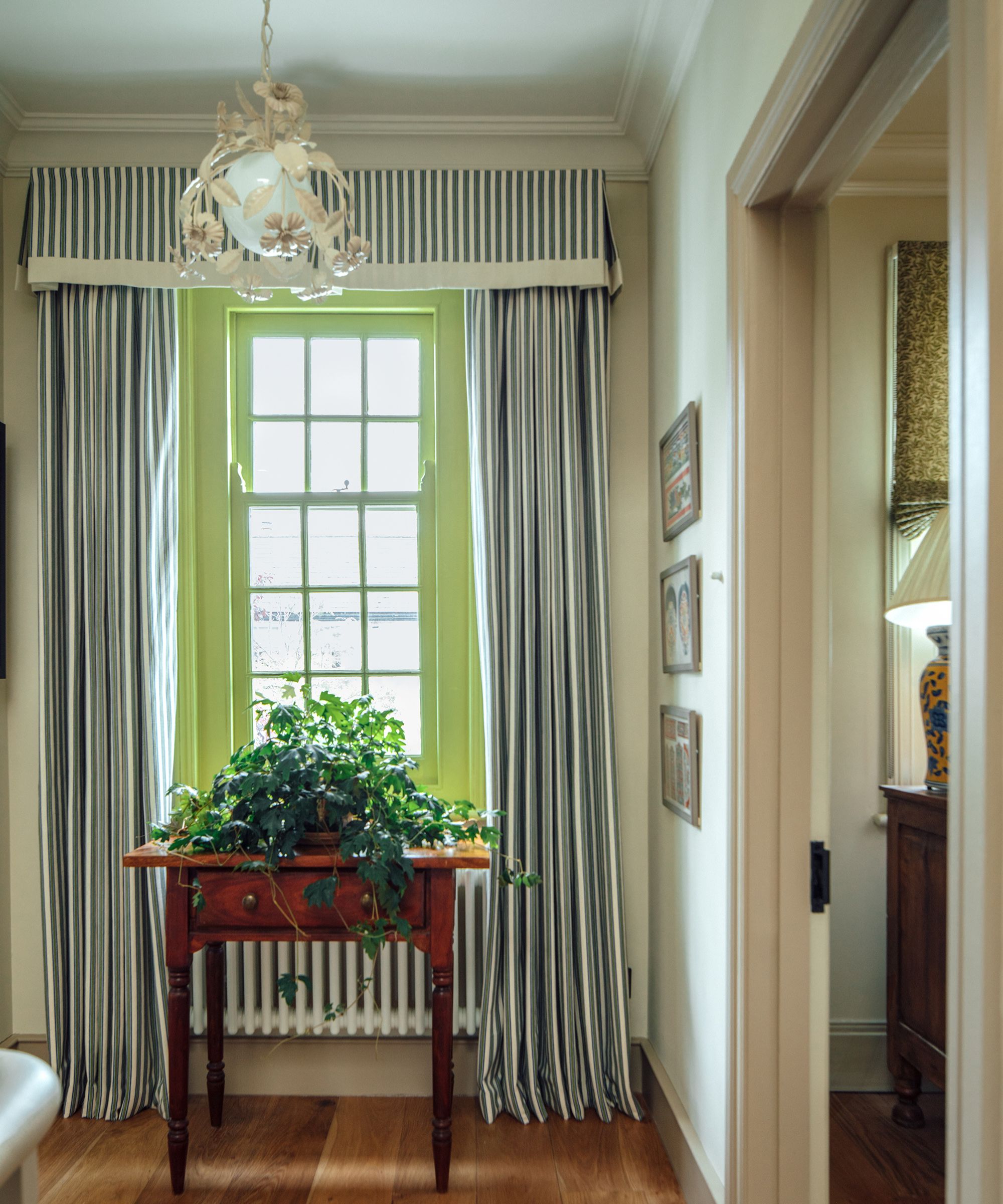
The pelmet is making a quiet but confident comeback. Curtain pelmets, often used in classic interior spaces, are used to conceal the top of the curtain.
A well-designed pelmet not only conceals curtain hardware for a neater finish but also adds a tailored, architectural element to the top of a window. Adding a luxurious, decorative touch to your windows, pelmets can also be used for insulation around windows, great for older buildings, and large window curtain ideas.
'Pay attention to the curtain headings for the look you are trying to create,' adds Harriet Sale. 'Think about whether you are hanging the curtains on a pole or on tracks, and whether you are going to have a valance, pelmet, or not.’
7. Embrace the matchy-matchy look by pattern drenching

Pattern drenching, where prints are repeated across curtains, upholstery, walls, and soft furnishings, is fast becoming one of the most expressive and characterful interior design trends of 2025.
Similar patterns can be used across both wallpaper and curtains, with both features able to bring in a beautiful element of texture, color, and character into a room.
As shown in this elegant and cocooning bedroom by House of Hackney, their bold 'Hollyhocks' print has been matched throughout the room from the walls and bed linens to the curtains to establish a luxurious, plush look that feels both cozy and unique.
8. Choose prints that echo a garden view
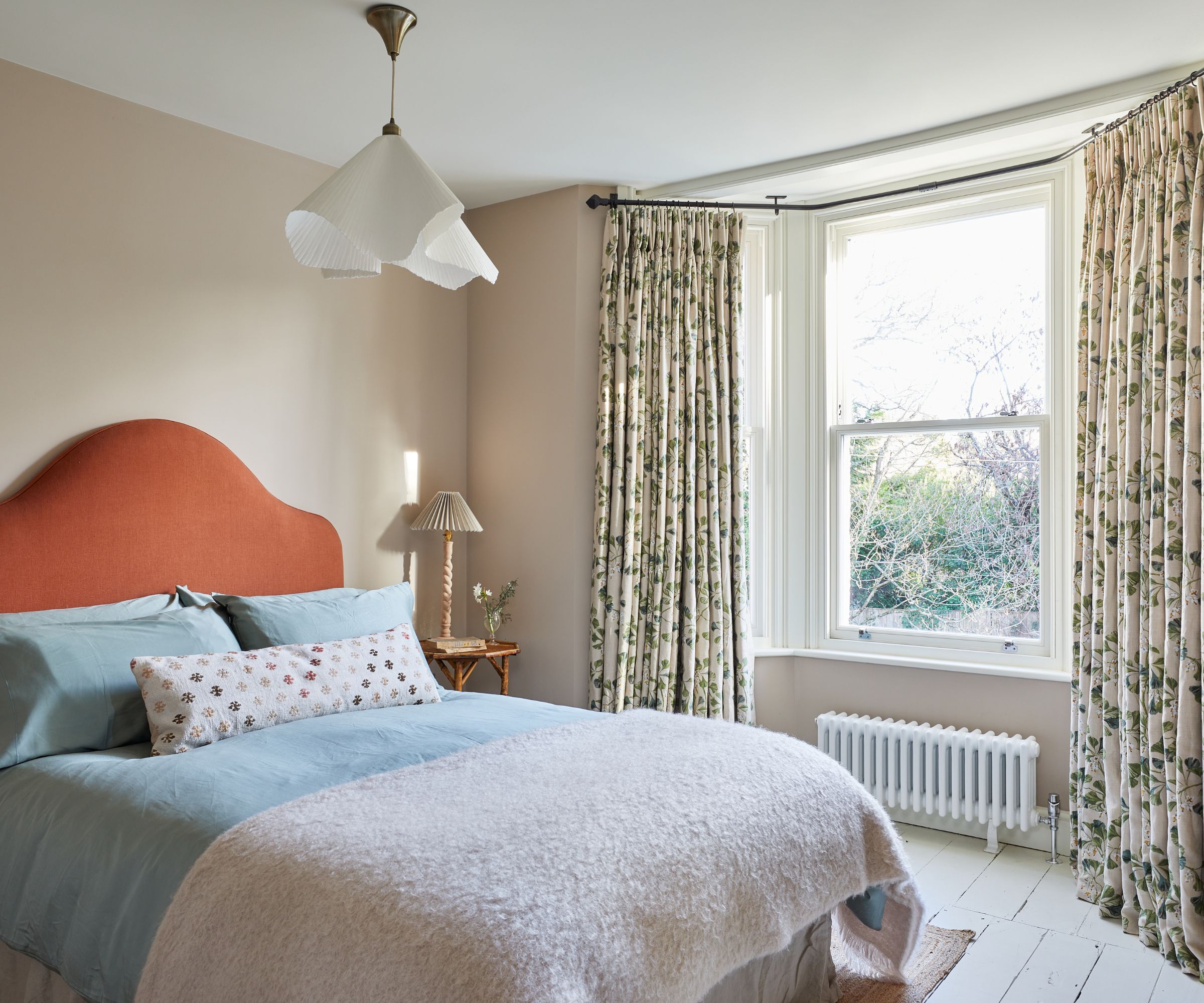
For a timeless look, a patterned curtain that takes inspiration from the beauty of the outdoors and features a floral or botanical print can effortlessly integrate into spaces both classic and contemporary.
Here, designer Holly of Vaughan Design & Development used pretty leafy curtains to frame the view from the window out to the garden, with the use of green for the delicate leaf pattern establishing a beautiful connection between the two spaces.
‘A large window overlooking a beautiful garden or view benefits from being framed by curtains with a patterned material reminiscent of the great outdoors,’ says Louise Wicksteed, Design Director at Sims Hilditch. ‘A delicate floral design which well reflects the colors seen from the window can work particularly well.’
9. Use drapes to create zones

When many of us think of curtain locations, we think of windows; however, from doors to beds, to curtain closet ideas, curtains can be used throughout the home to make a room feel more private and cozy, as well as being used to help zone a space.
In this cottagecore style bedroom, the four-poster bed has been dressed with soft, sheer floral curtains. Adding a tactile element of texture to the room and helping to establish a tranquil and private sleep space, these curtains nod to a traditional canopy bed design but with a simpler and organic look.
Heavier fabrics can be used to create cozy, enclosed nooks, while lighter linens and sheers work well for gently delineating areas without blocking light. For a seamless look, ceiling-mounted curtain tracks or recessed rails allow the fabric to fall cleanly from top to bottom, enhancing the sense of height and flow.
10. Use pattern and color to uplift a neutral space
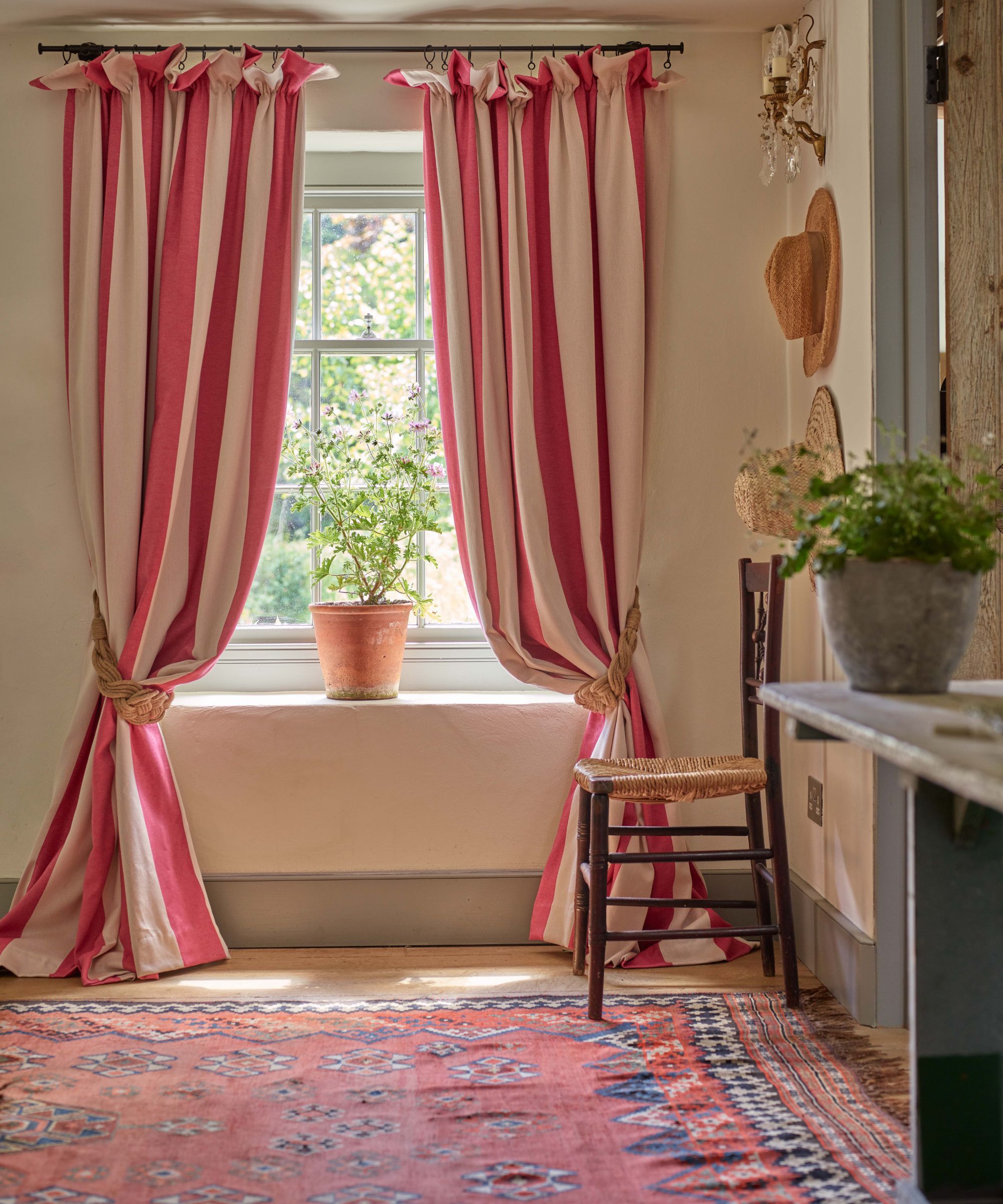
Your curtains can transform the look of a room with added color and texture, and can be a great way to uplift a neutrally styled space with an accent color – one to remember for neutral room ideas.
Emma Clarke, director at Warner House says, ‘Curtains can bring color, warmth, drama, and joy to your room. More than just a finishing touch, they can be the focal point, providing your scheme with charm and texture.’
With so many beautiful curtain prints and patterns to choose from, a well-chosen fabric can become the focal point in an otherwise restrained room, lifting the mood, adding depth, and creating a more visually dynamic scheme. Even a subtle stripe, small-scale print, or muted floral can bring warmth and energy to a pared-back palette.
11. Embrace a more maximalist look
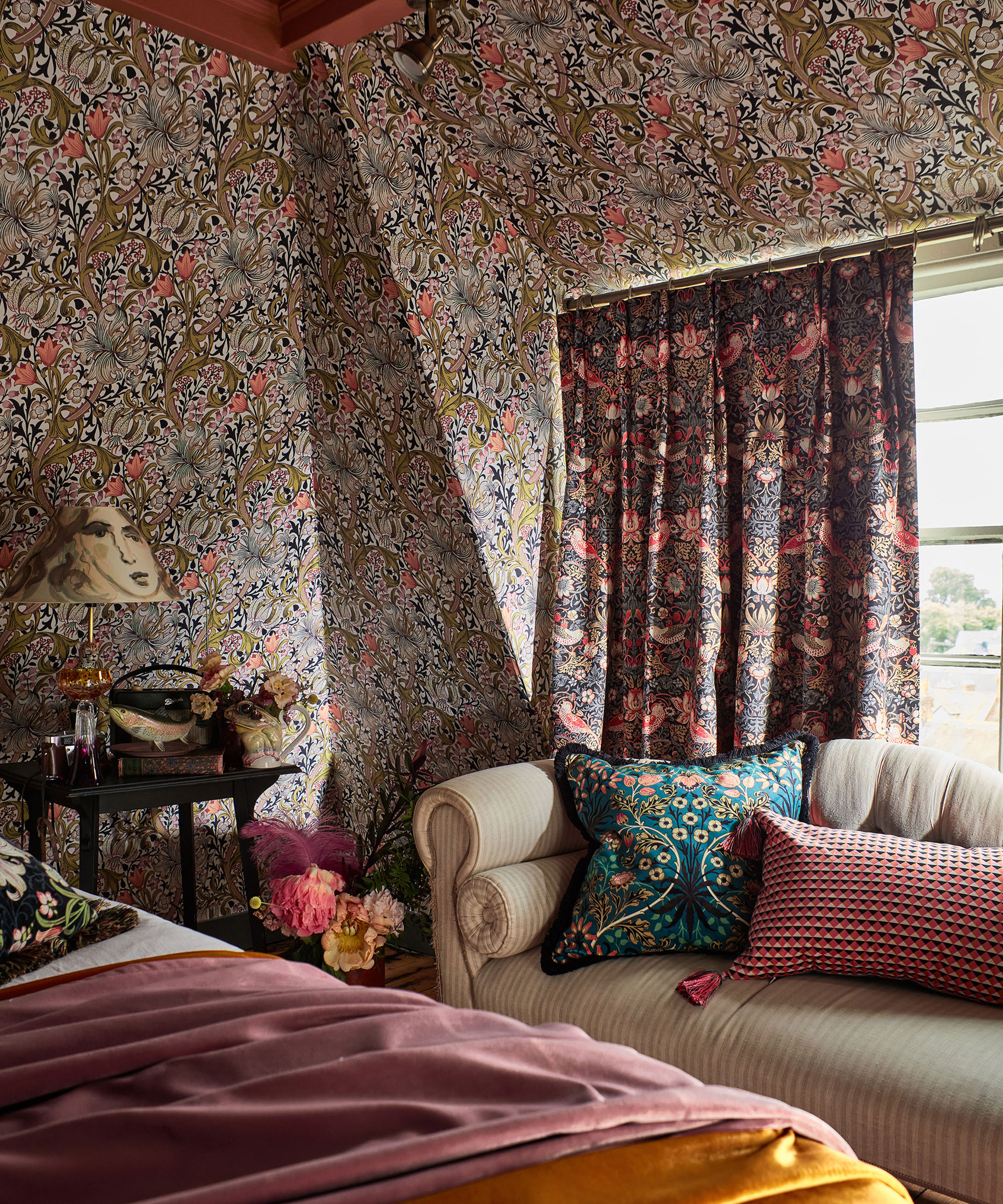
While neutral curtains offer calm and versatility, there’s something undeniably exciting about leaning into a more maximalist approach. Bold prints, rich colors, exaggerated trims, and layered textures can turn curtains into a true statement piece
Layering pattern on pattern, and using a bold color palette, can create an impactful and daring look for maximalist decor ideas, and your curtains can be an integral part of the design.
‘I love combining lots of different-scale patterns and prints to create a rich, dynamic and balanced scheme,' says Richard Smith, founder and creative director at Madeaux. 'By layering contrasting wallpapers and fabrics across your walls, upholstery, curtains, and other decorative touches, you can create a maximalist interior full of personality and warmth, perfect for social spaces such as living or dining rooms.'
12. Try out a chic cafe curtain

Cafe curtains are a stylish and practical choice that blends vintage charm with modern versatility. Typically covering just the lower half of a window, these chic French bistro-inspired mini curtains provide privacy while still allowing plenty of natural light to flood the room.
'Cafe curtains are my go-to window treatment for any room that requires privacy but would benefit from natural light... and a little charm,' says interior designer Shannon Eddings, who designed the stylish bathroom seen above. 'Their history of use in French cafes and English Country homes only added to their charming allure.'
Often made from light cotton or linen, cafe curtains can be plain, embroidered, or printed with playful patterns like gingham or florals, lending a touch of personality without dominating the room. They work particularly well as kitchen curtains or bathroom curtains – spaces where you want both brightness and a bit of discretion.
14. Add contrasting and playful trim
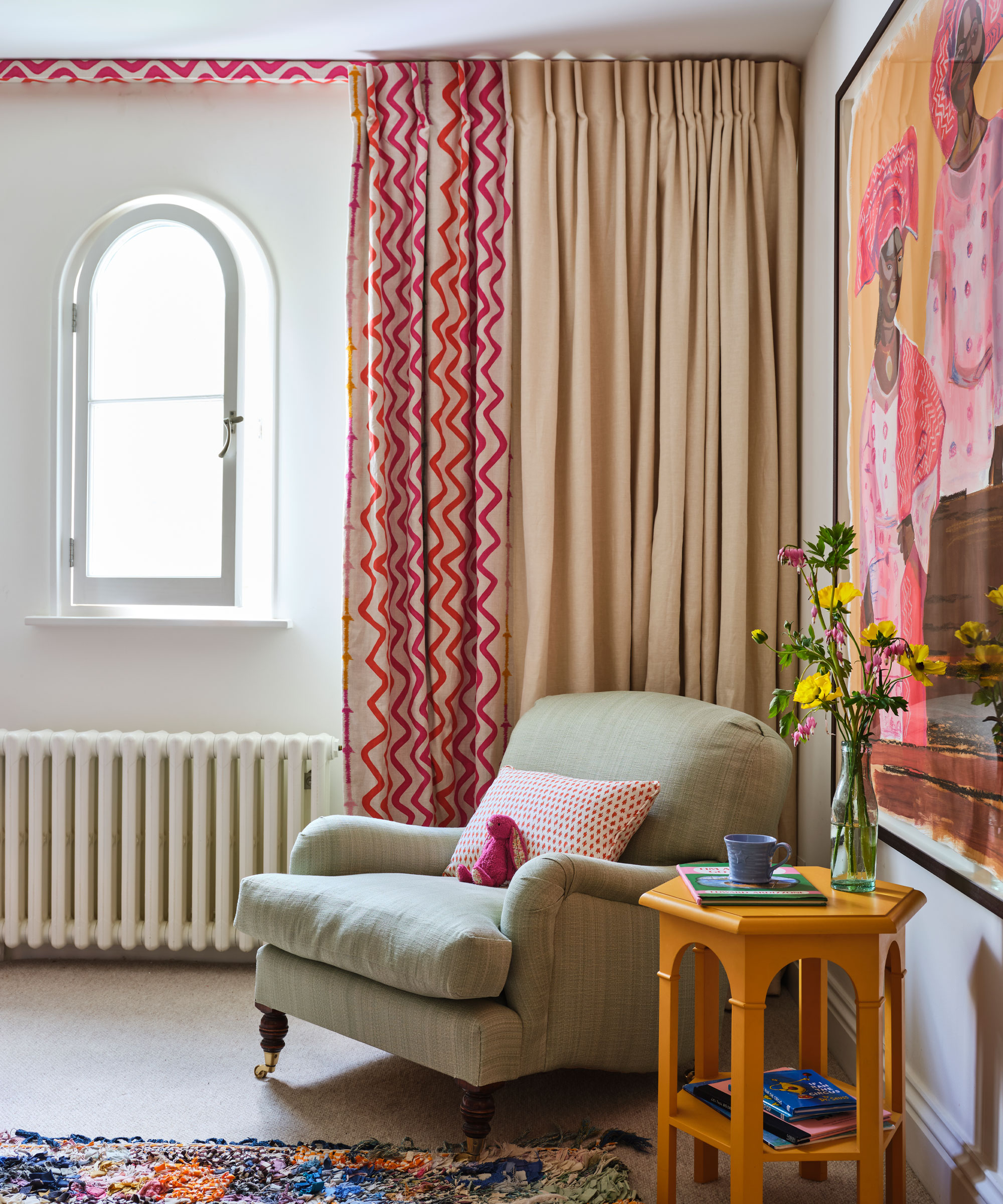
Looking for ideas to jazz up existing drapes? From pompoms and piping to fringing and braids, trims are a beautifully simple way to personalize plain fabrics and inject some individuality into your space.
In this colorful children’s bedroom by Kate Guinness, the curtains combine a calming cream with a bright and unexpected use of color and pattern for the leading edge of the curtains. The Rick Rack fabric by Kit Kemp injects a playful element of fun to the space, and ties in with the pink and yellow palette used throughout the room, with the cream instilling a sense of balance and harmony.
If you prefer plain fabrics to patterned but are concerned your drapes may ‘disappear’ against painted walls, or look a little drab, add a color block trim in a vibrant contrasting shade at the top (or at the bottom) of your curtains to make them pop, as shown here with this eye-catching fuchsia pink and soft grey combination.
15. A front door curtain will trap in warmth
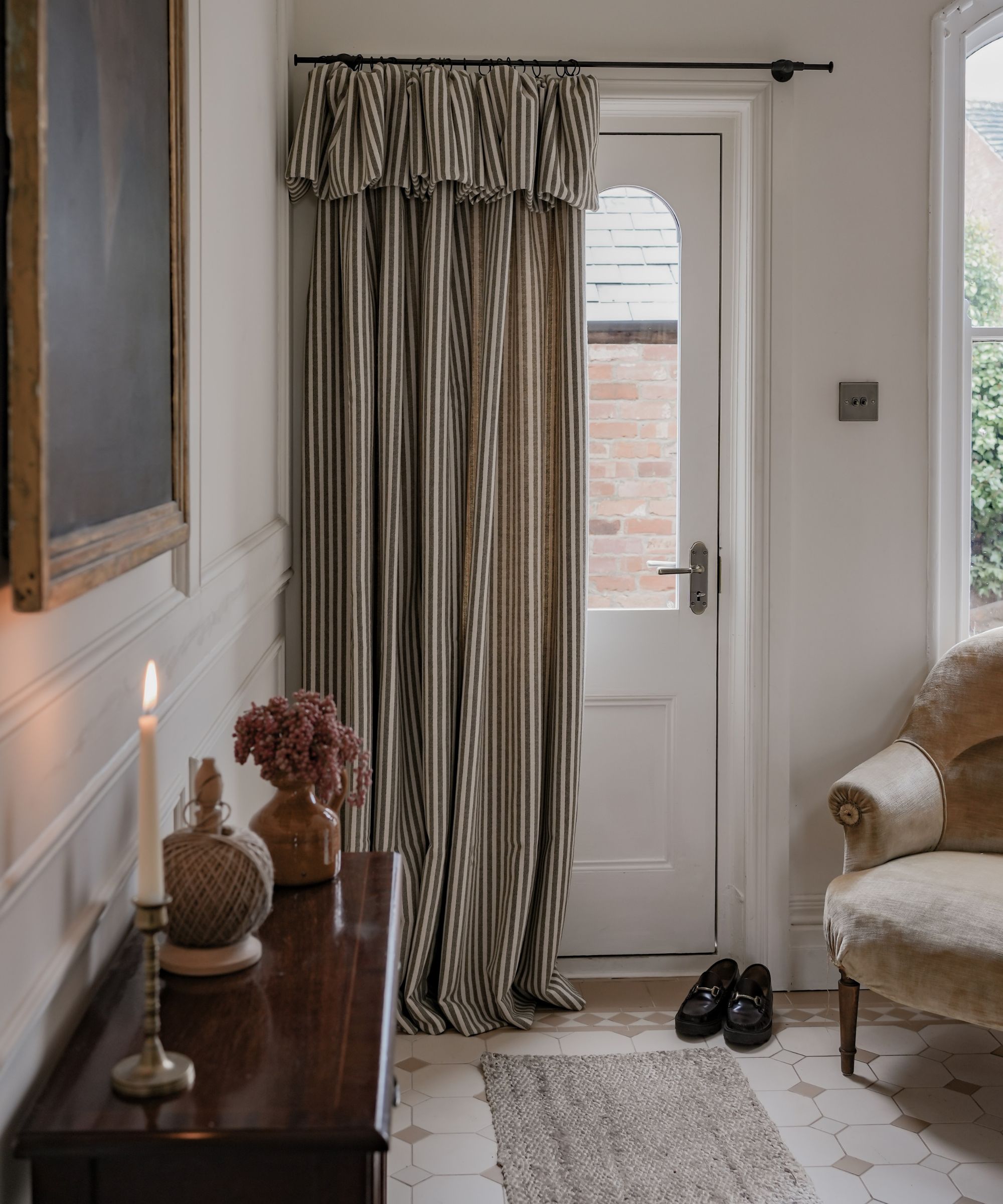
A door curtain can help to create an enhanced feeling of coziness and warmth in a space. Adding texture, pattern, and style to your doorway, a fabric curtain can also help with draft exclusion, preventing cold air from passing through an entryway.
An elegant way to frame and add an element of softness to a doorway, a door curtain can help to create a more inviting entrance into your home.
For rustic romance, consider a flop-over-frill at the top of your curtains, like this thermal front door curtain seen above by Tori Murphy, who adds: 'Curtains are more than just window coverings, they are a way to add texture, warmth, and personality to a room. Soft patterns such as classic stripes, small-scale geometrics, and checks that add character without overwhelming the space are perennial favorites.'
16. Use your curtains to create the sense of height
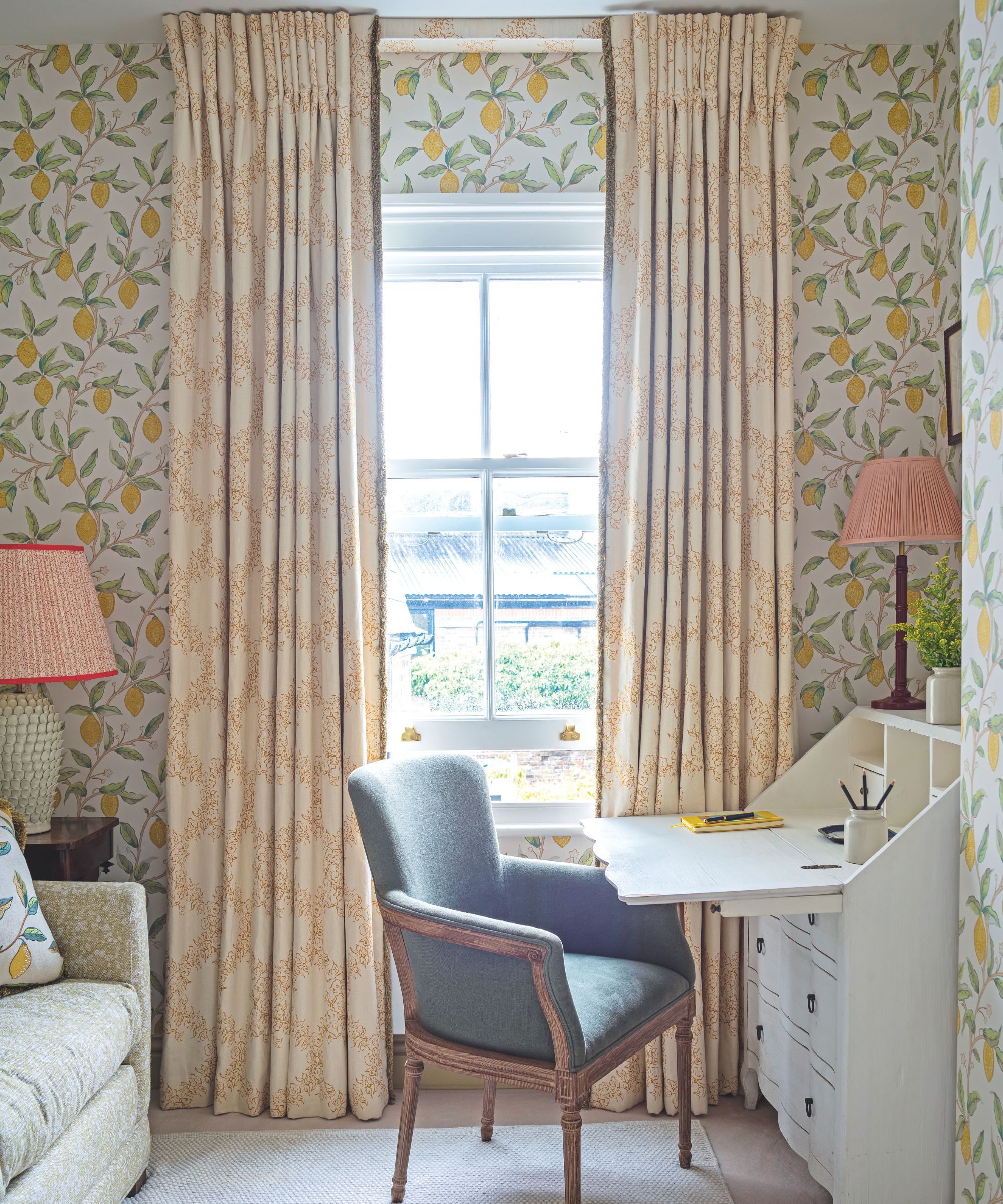
One of the most effective visual tricks in interior design is using curtains to enhance the perception of height in a room. It’s a small adjustment that delivers a significant impact, especially in rooms with standard or low ceilings, and all it takes it raising the pole.
‘If you have windows at various heights, then I'd always use these to give the illusion space,’ advises Emma Deterding, founder and creative director at London-based Kelling Designs.
'For the higher window, take your curtains right to the ceiling as this will make the room feel taller and make the most of the ceiling height. For lower windows, fit the curtain rail above the window, leaving the wall above exposed as this will help balance the space and give a sense of grandeur.’
Curtain FAQs
What curtains are in style?
Ultimately, the best curtains to pick for your home are the ones that you feel most speak to you and your scheme. But if you're wondering which types of curtains are the most en vogue, we can share a little wisdom below.
Right now, there are two main styles that are dominating curtain trends: full-length curtains of all iterations (short ones are very much out) and the cafe curtain for a more whimsical look.
We're seeing a strong return to prints and patterns, from romantic florals to bold stripes for more modern curtain ideas, as well as rich textures like linen, velvet, and embroidery. These each add personality and softness, and work beautifully across both modern and traditional interiors.
On the flip side, simple and understated curtain styles, like classic pinch pleats in neutral tones or sheer cafe curtains (perfect for farmhouse curtain ideas and country curtain ideas), are equally on trend, especially when layered with blinds or shutters. The key is to choose a style that complements the rest of your space and feels like a deliberate part of the design, rather than an afterthought.
Curtains should be as important as the furniture and accessories, not an afterthought. They can make a neutral scheme suddenly feel uber stylish, or add that level of luxury that you can’t achieve anywhere else. For some more guidance on choosing and planning the curtain ideas for your home, our curtain mistakes to avoid guide has plenty of advice.
How do you choose curtain fabric?
When choosing curtain fabrics, start by considering the room’s overall style, the amount of light you want to let in, and the level of warmth or privacy you need.
The fabric should work harmoniously with your home's architecture as well as the color scheme, textures, and patterns already in the space. 'The best color for curtains is at least one shade lighter or darker than the walls,' advises fabric designer Vanessa Arbuthnott on how to choose curtain colors for every room, to avoid common curtain color mistakes.
The weight and drape of the fabric are also key. Heavier fabrics like velvet or wool provide a more formal, insulating finish, while lighter options like linen or cotton voile offer a breezier, more relaxed feel.
'Almost any fabric can be used as a curtain provided it has beautiful drape,' notes designer Emma Clarke. Consider interlining too – an extra layer of insulating fabric (sometimes called bump) between the lining and surface material – as this will reduce chills, and even noise, from outside. Unlined curtains are also one of the things that make a house look cheap.
What is the best material for curtains?
The best material for curtains depends on the function of the room, the look you want to achieve, and the level of privacy, warmth, or light control needed. In larger, draftier homes, heavier fabrics like velvet can add insulation and a sense of luxury, while in brighter, more relaxed rooms, something lighter and airier like linen or cotton is often preferred.
And it’s easy to see why – slubby and glorious, linen hangs beautifully and comes in an array of subtle shades. Voiles are a good bathroom curtain idea, and if you fancy a spot of glamor in the bedroom, opt for silk-lined drapes.
Fabric choice makes all the difference to how curtains feel and perform in a space, so think about texture, weight, and how the fabric will drape when choosing the right one for your scheme.
Here’s a quick guide to popular curtain fabrics and their pros and cons:
- Velvet – Pros: Excellent insulation, rich texture, luxurious look Cons: Heavy, can feel too formal in casual spaces, more expensive
- Linen – Pros: Beautiful natural texture, hangs softly, ideal for relaxed interiors Cons: Can wrinkle easily, may require lining or layering with other window treatments for privacy/light control
- Cotton – Pros: Versatile, easy to care for, available in a wide range of prints and weights Cons: May fade over time in direct sunlight without proper lining
- Silk – Pros: Elegant and light-reflecting, perfect for creating a glamorous feel Cons: Sun-sensitive, requires lining, can be expensive and delicate
- Voile/Sheer Fabrics – Pros: Light-filtering, great for layering or softening windows without blocking light Cons: Offers minimal privacy and no insulation
- Wool or Wool-Blend – Pros: Great for warmth and traditional interiors, excellent drape Cons: Heavier look, not suited to all climates or styles
What are the different curtain styles?
Curtain styles typically refer to the heading, a.k.a the way the fabric is gathered or pleated at the top, which not only affects how curtains hang but also contributes to the overall look and feel of your drapes or curtains.
Ready-made curtains often come with standard eyelets or pencil pleats, while made-to-measure styles offer more decorative options like double or triple pleats, frills, headings, and trims that can add character and a tailored finish.
Emma Clarke adds, 'Add character with headings and trims. I love the pinch pleat heading: triple pinch for a heritage look, double pinch for a sleeker finish. And add luxurious brush fringe or smart animal print tape to the leading edge for a polished effect.'
For a quick read, see the different types with their pros and cons below, or check out our full guide to the types of curtains explained.
- Eyelet – Pros: Modern and minimal, easy to hang on a pole, neat uniform folds Cons: Less traditional, not suitable for curtain tracks, limited fabric fullness
- Pencil Pleat – Pros: Versatile, suits both modern and traditional interiors, works with tracks and poles Cons: Can look less crisp or structured unless perfectly dressed
- Double Pinch Pleat – Pros: Tailored and elegant, slightly softer than triple pleat, ideal for patterned fabrics Cons: Requires more fabric than basic styles, typically made-to-measure
- Triple Pinch Pleat – Pros: Classic, formal look with full, even folds. Great for heritage and traditional spaces Cons: Fabric-heavy and more expensive, can feel too structured for casual spaces
- Gathered – Pros: Relaxed and soft, perfect for country or cottage-style homes Cons: Less formal and less structured, may not suit contemporary schemes
- Flop-Over Frill/Valance Header – Pros: Decorative and romantic, great for layering or vintage-inspired looks Cons: Can feel dated in the wrong setting
- Wave Header – Pros: Clean, modern, ideal for large windows and minimalist interiors Cons: Requires specific track system, less traditional in appearance

Charlotte is the style and trends editor at Homes and Gardens and has been with the team since Christmas 2023. Following a 5 year career in Fashion, she has worked at many women's glossy magazines including Grazia, Stylist, and Hello!, and as Interiors Editor for British heritage department store Liberty. Her role at H&G fuses her love of style with her passion for interior design, and she is currently undergoing her second home renovation - you can follow her journey over on @olbyhome
- Zara StaceyContent Editor